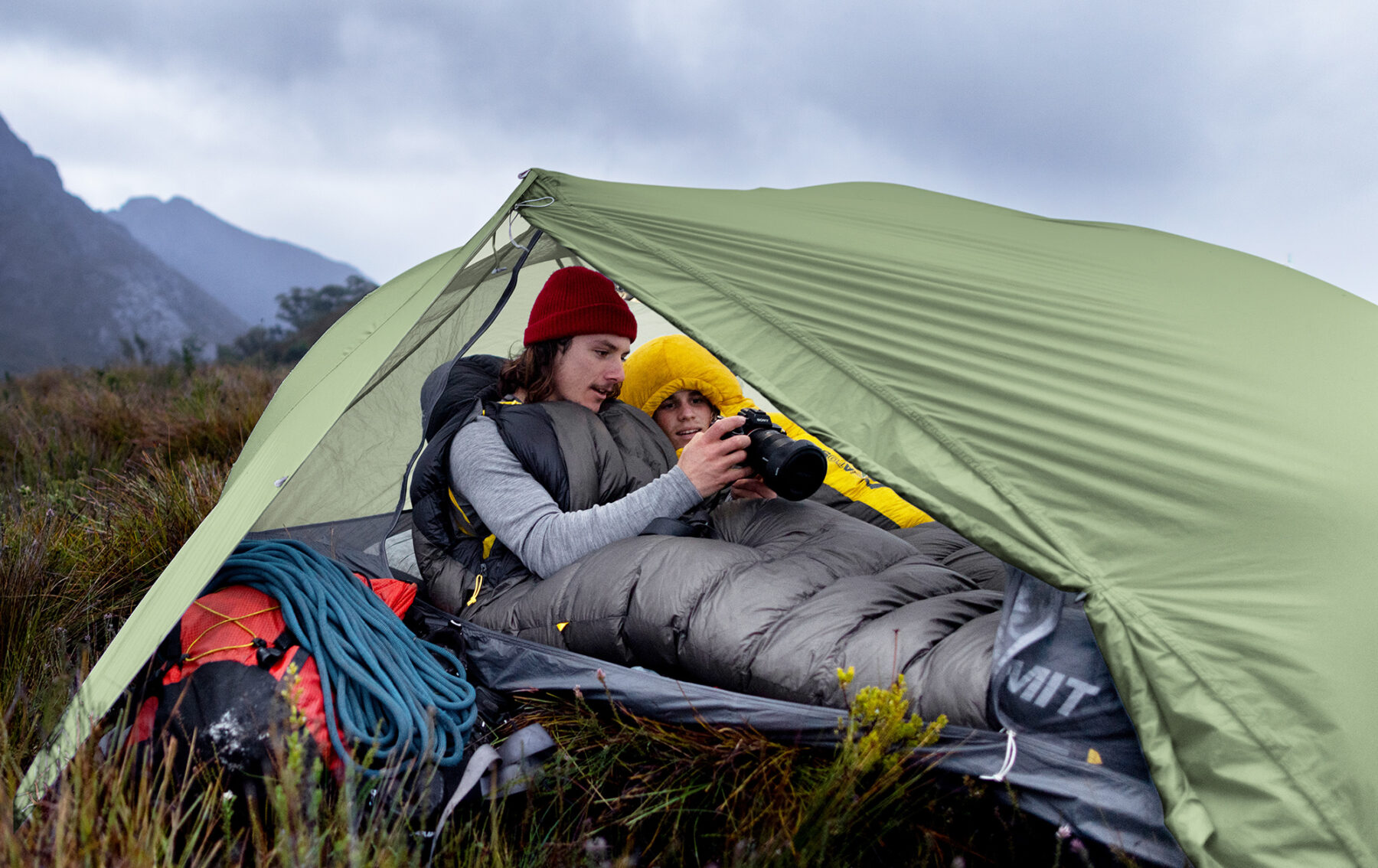A sleeping bag is one of the most important pieces of outdoor gear to ‘get right’ at purchase. Sleeping bags provide shelter, warmth, and comfort, so buying the correct one for the conditions you are going to experience is paramount.
As well as the conditions it will be used in, sleeping bag choice will be heavily influenced by how your body works; whichever one does the best job of keeping you warm and comfortable will be the bag you need. A sleeping bag’s temperature and comfort rating plays a big role in your choice and, again, will be dependent on what conditions you are camping in (see Sleeping bag temperature ratings explained at the end of this story).
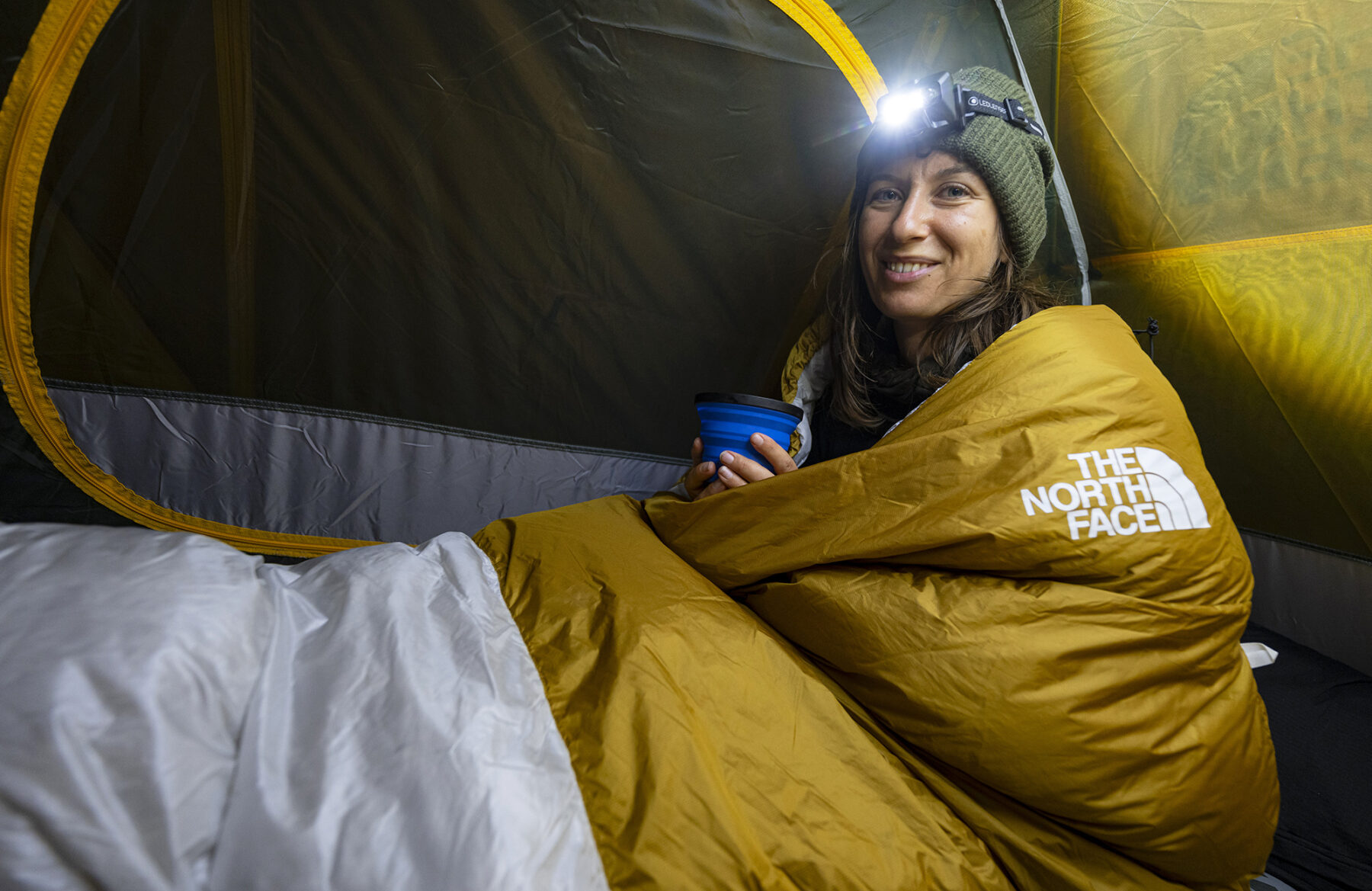
In understanding how sleeping bags work and which one is best for you, it’s a good idea to start with the basics, and it doesn’t get more basic than physics. A branch of physics called thermodynamics, to be specific. There’s also a bit of biology involved.
You see, warm-blooded mammals like us are basically living heaters, fuelled with energy from the food we eat. The job of a sleeping bag, like any insulator, is to prevent the flow of that heat from one place to another – in this case, from your warm body into the chilly night.
The opposite of an insulator is a conductor. Think about it: although they feel like it, metal railings aren’t colder than wooden ones, they simply strip away your heat faster because they’re more conductive. Air, on the other hand, is a rather poor conductor, and when trapped (for example, in air pockets in foam, or between feathers or plastic fibres) is an effective insulator. The more air pockets and the smaller they are, the more effective the insulation.
For most Australian conditions (including the alpine regions and the central deserts), a bag rated around 0 degrees (or three-season) is the best all-round option. However, because individuals’ bodies are all different, with some people being ‘cold’ sleepers and others happy in sub-zero temps with only a very light bag, you will need to test as many bags as you can to achieve the best ‘fit’.
Whether to opt for a down-fill bag (usually goose-down) or a synthetic-fill bag is the main decision you will need to make. Either option has advantages and disadvantages (see Materials, below).
Styles
Sleeping bag shape (or style) plays a major role in final choice. For the best warmth retention capabilities, a mummy-cut bag is the best option. This is due to its compact, snug shape (hence the ‘mummy’ moniker) ensuring that there is minimal ‘spare air’ for your body to warm up.
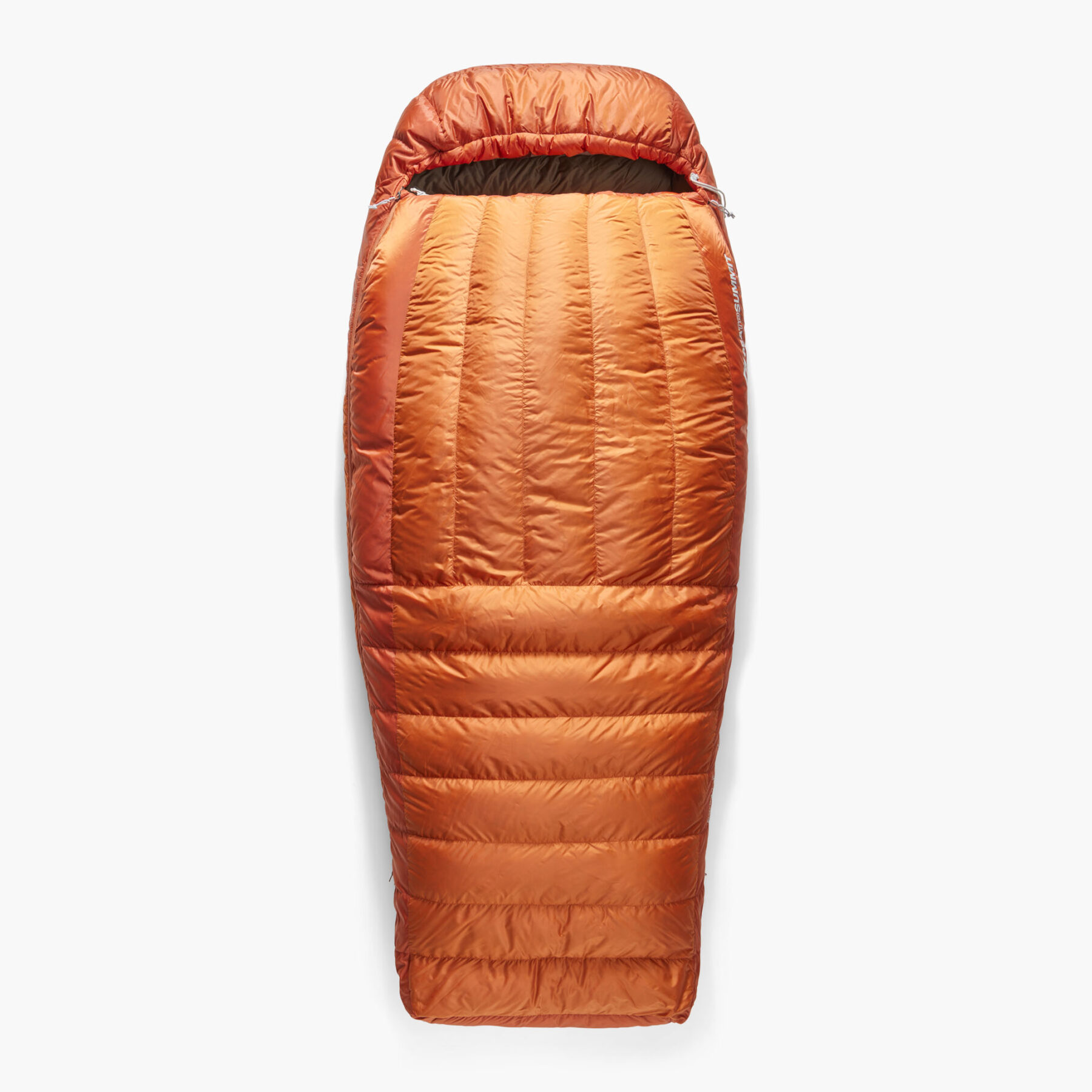
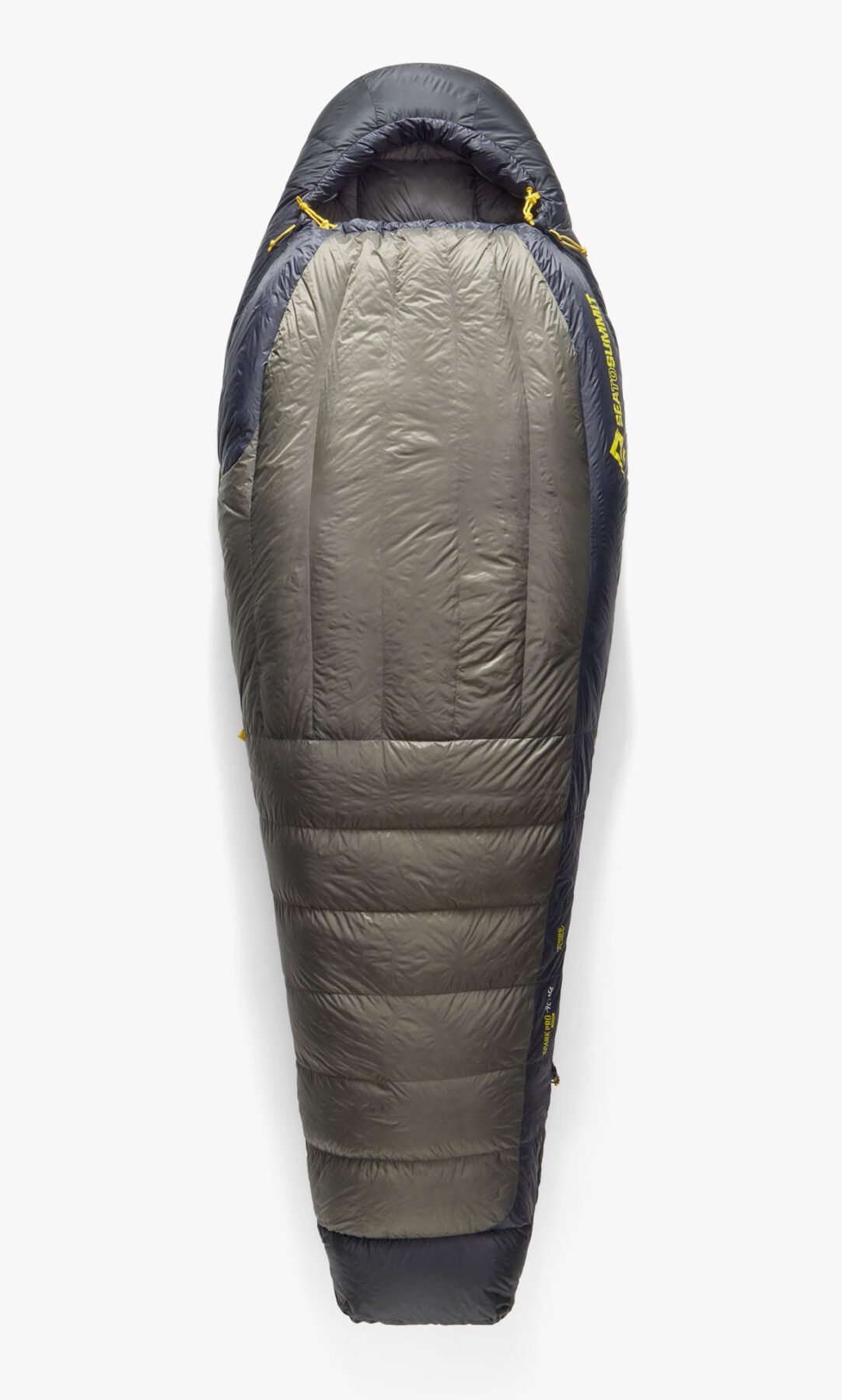
However, mummy bags can be constricting for some and make for an uncomfortable night’s sleep, although some models, such as the Sea to Summit Spark Pro Down, include additional ventilation via zipped sections at the foot. Rectangular bags are the exact opposite: there’s loads of room inside, with the result being that your body has to work twice as hard to warm up all that vacant space. Semi-rectangular, or relaxed-mummy bags are the ideal compromise for those who don’t want to be overly constricted or spend the whole night trying to stay warm in a voluminous bag.
So, what is fill power and what is fill weight?
Put simply, fill power, which you’ll find listed as a specification of down sleeping bags, is the inverse of density – the higher the fill power, the less dense the down. More technically, it represents the relationship between the mass of the down and the space it occupies (generally represented in cubic inches per ounce).
Therefore, a sleeping bag labelled 800 fill power goose-down will loft (or fluff up) to 800 cubic inches per ounce (about 28g) of down. Fill power of 400-450 is considered medium quality, 500-550 is good, 550-750 very good, and 750-plus is excellent.
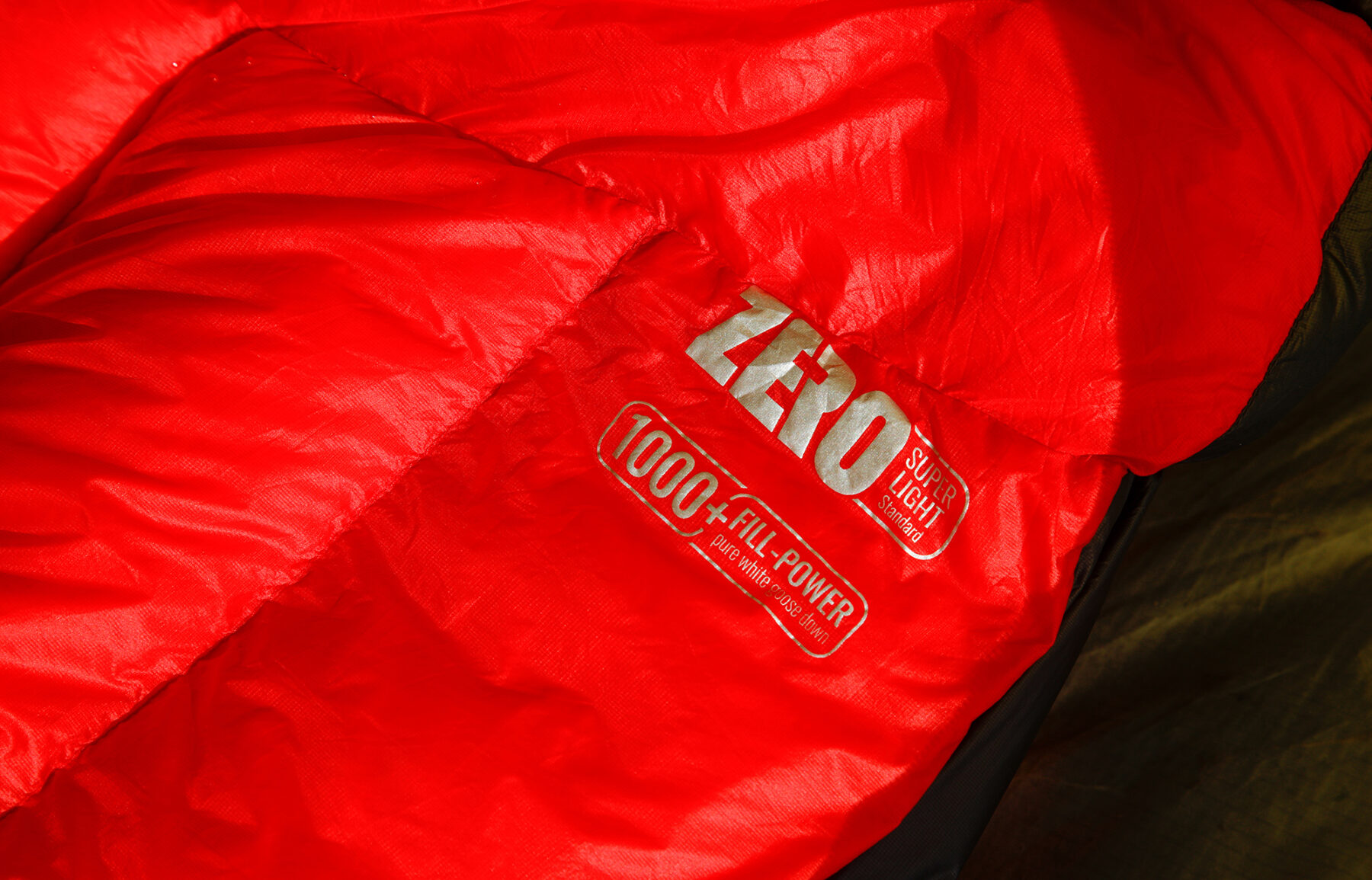
A bag’s fill weight, as opposed to its overall weight, and its ‘loft’ rating are two very important figures. The loft rating, measured in cubic inches, records the volume of the bag that is filled by expanded down. Basically, the higher the loft-figure (and the ‘puffier’ the bag when laid out), the higher quality down and better heat retention.
Fill weight is important, too, as it tells you how much of the bag’s overall weight is fill (which creates the bag’s warming attributes). Again, the higher the better as more fill generally equals more warmth, if the loft figure is reasonable – between 600 and 800 is ideal for all-rounder sleeping bags.
Materials
How heavy a bag is – and how compact it packs – may or may not be important, but it is reliant on the materials used – with the biggest material influence the actual fill type that is used in the bag. The majority of sleeping bags use synthetic fibre (nylon or a variation of) for the outer shell, but buyers have two choices for the fill material: down or synthetic.
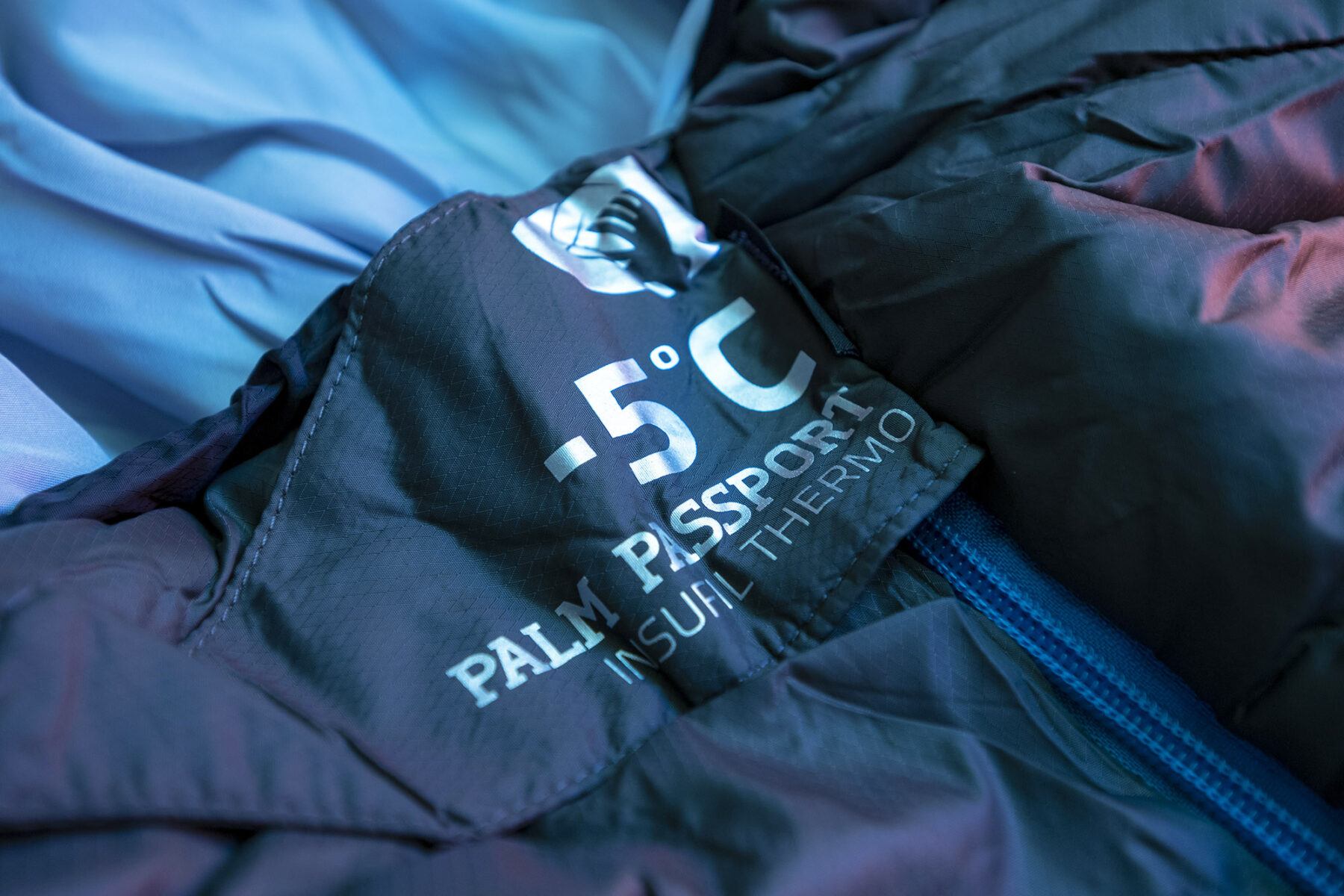
For decades, down-fill bags have been the preferred option due to that fibre’s better warmth for weight performance – plus, it also means the sleeping bag will pack down more compact as down is more compressible. For vehicle-based camping, this may or may not be a huge issue, depending on whether you’re traveling in a big LandCruiser, or a smaller, more compact SUV, such as a Toyota RAV4 or Subaru Forester.
However, synthetic fill technology has advanced incredibly in the past decade to the point now where a synthetic-fill bag is a viable option for even the fussiest sleepers; the latest tech synthetic fill compresses like down, while offering close to the warming capability, albeit still with a weight disadvantage. Again, a 500-gram difference in sleeping bag weights may not be an issue for vehicle-based campers, and you’ll be paying a reasonable amount less when forking out for a synthetic-fill bag.
So, down or synthetic?
Down is still the optimal choice for most ‘serious’ (for want of a better description) outdoor sleepers. Its warmth to weight ratio, its compressibility, it has a longer ‘life’ compared to synthetic, and it is more resistant to odour retention. It does have its negatives, though: if you get your down-fill sleeping bag wet, it will just be wet and cold – it will not offer any warmth at all (there are moisture-resistant down sleeping bags on the market, but they are very expensive). Plus, it is, as mentioned earlier, very expensive.
Synthetic-fill bags’ biggest appeal is they are (sometimes significantly) cheaper, can offer the same warming capability (albeit with a weight penalty), and will retain some warmth even when wet. The synthetic-fill technology is ‘nearly there’ in terms of its warmth when compared to down, but you will pay a weight and bulk penalty for a synthetic-fill bag. Plus, synthetic fill does not (as a rule) retain its warming characteristics for as long as down does (this writer has a down-fill bag that is now 20 years old and its still just as cosy as when new).
The sleeping bag essentials
An effective hood design is one of the essentials when it comes to buying a sleeping bag. A percentage of body-heat is lost out through your head, so covering it with a hood will keep that warmth. Make sure the hood is a contoured design if possible and has an effective draw cord to close in around your head for maximum heat retention. Also note a bag with a neck collar offers even more heat retention.
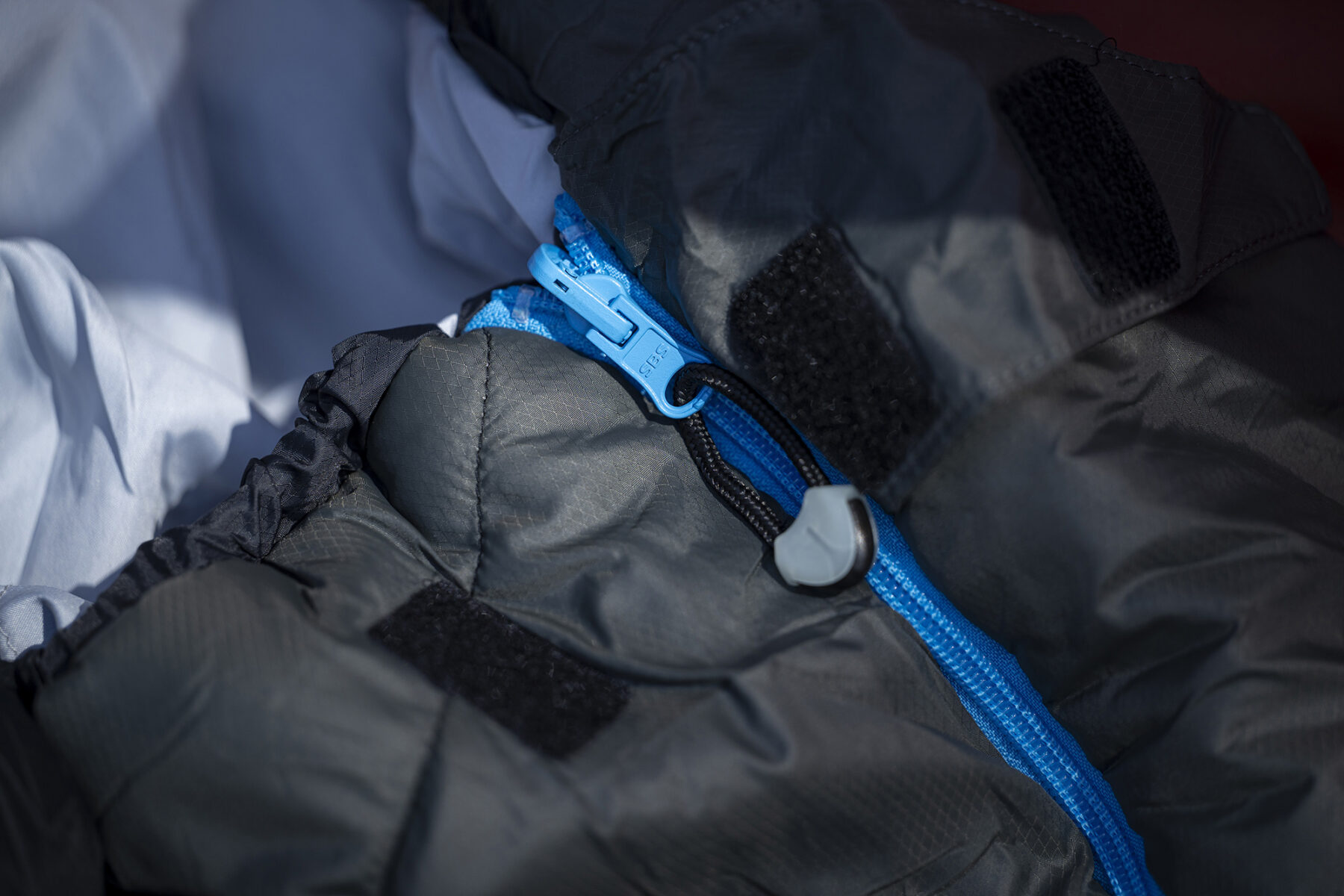
Durable zips are a must, for obvious reasons. If you cannot zip up your bag on a freezing-cold night, you could be in trouble. Test all zips thoroughly before purchase for snagging. Look for two-way zips where possible as they offer enhanced ventilation. Non-snagging zips and anti-snag protectors along the zip-line are a godsend.
Weight is nearly always an issue when you’re hiking, bikepacking, or paddling. However, don’t go too light if it means you skimp on fill. Less fill in a too-light bag means your body must work harder to generate more heat to compensate. Sleeping bag weights vary wildly, depending on fill weight and outer shell fabric weight. For a quality three-season bag for overnight (or longer) walks, aim for a bag weight of no more than around 1200g.
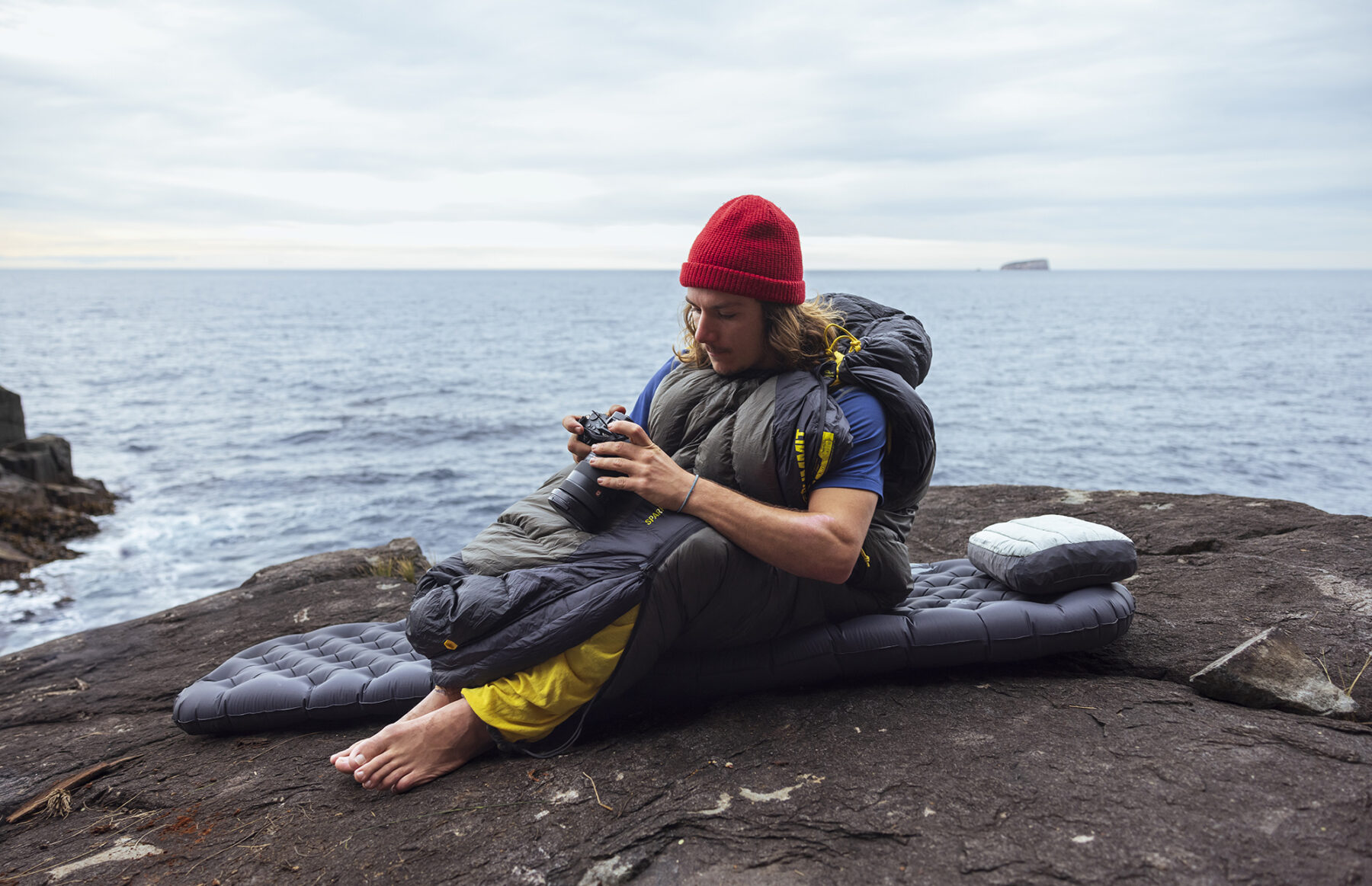
The effectiveness of a bag’s cut is also worth noting. Each bag design is subtly different; some mummy bags are more generous than others. Look for the one that offers the best heat retention qualities for your body shape without being too ‘tight’. Bags that are too small will compress the fill when you’re in them, affecting heat retention.
Check the type of baffle construction used (trapezoidal is one example) as this can also affect the bag’s distribution (and the movement) of its fill; there’s nothing worse than all that warm fill being down at the bottom of the bag when your shoulders and upper body are cold. The bag’s loft rating is also very important; the bag that expands the most in-store will generally offer the best loft – and thus warmth!
Last, but not least, most bags have down- and fill-proof outer shells, to keep the insulation in. Check for robustness. There are also water-resistant (and some waterproof) outer shell fabrics available, but these do inhibit breathability. Again, it’ll depend on the bag’s intended use.
It’s still personal
Sleeping bag choice is, like most gear we spend a lot of time using, always going to come down to personal choice – and, of course, budget (especially if you’re fitting out a family of four or more). The best bet when looking for a sleeping bag is to not be shy about testing them in-store – and testing as many as you can. If you have in your mind a rough idea of what shape and fill you’re after, i.e., a semi-rectangular, down-fill four-season/0-degree bag, that will cut down the time you need to choose the right one.
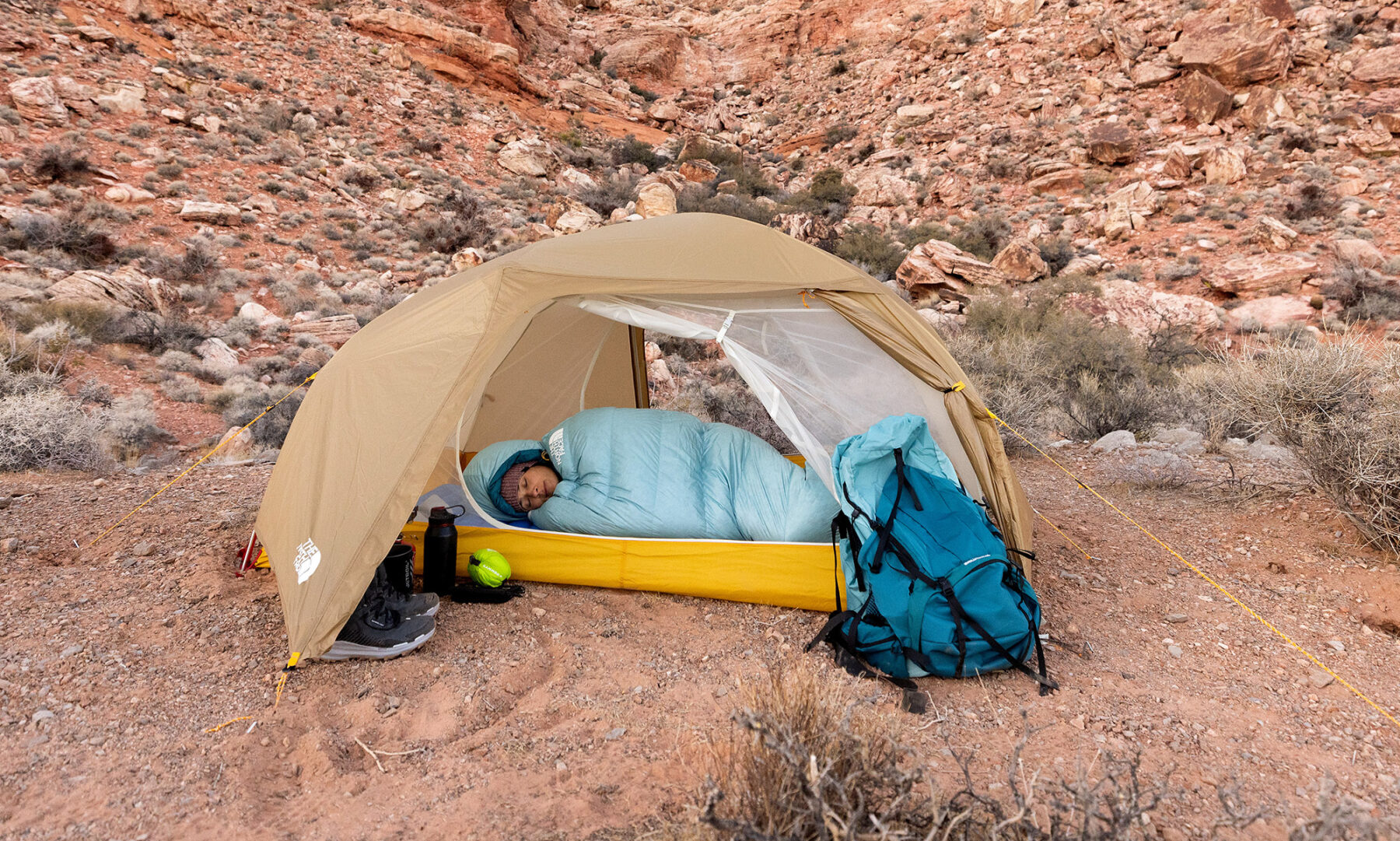
In terms of what to look for: an effective hood design (it will keep that warmth inside the bag, rather than being lost through your noggin); durable zips; sufficient fill; neck collar (for even more heat retention); sufficient fill (don’t skimp on this); efficient cut (figure out which you prefer: semi-rectangular or mummy).
Don’t be afraid to ask as many questions as you can of the retail staff. Most of those working in the camping and outdoor stores are campers themselves, often with many years’ experience, so if you can give them an idea of where you will be using the bag and what you ideally want out of it, you’ll be snug as a bug in your bag, enjoying that starlit outback night before you know it.
Sleeping bag temperature ratings explained
There is no standardised temperature rating for sleeping bags. Some manufacturers use a simple ‘season’ rating – one; two; three; or four – while other manufacturers use the EN 13537 rating system, introduced by the European Outdoor Group in 2005.
This rating method uses a dummy attached to 16 sensors, housed in a climate chamber. The EN 13537 ratings are based on a standard male weighing 80kg and a standard woman, at 60kg.
EN 13537 Upper Limit (or Maximum Temp) is the highest temperature at which a standard adult male can have a comfortable night’s sleep without excess sweating.
EN 13537 Comfort is based on a standard female having a comfortable night’s sleep.
EN 13537 Lower Limit is based on the lowest temperature at which a standard adult male is deemed to be able to have a comfortable night’s sleep.
EN 13537 Extreme is a survival-only rating for a standard adult female. According to the European Outdoor Group, this is an extreme survival rating only and it is not advisable for consumers to use this rating as any type of guide. For the best guide to ratings, buyers should use the Comfort and Lower Limit ratings.
The EN rating system, like all others, is reasonably effective, as far as it can be, without allowing for several other variables related to the individual. These include: your general health and metabolism; how much food you’ve eaten on a particular day; exertion levels; degree of shelter, moisture, and altitude; and how effective the insulating mat is.
